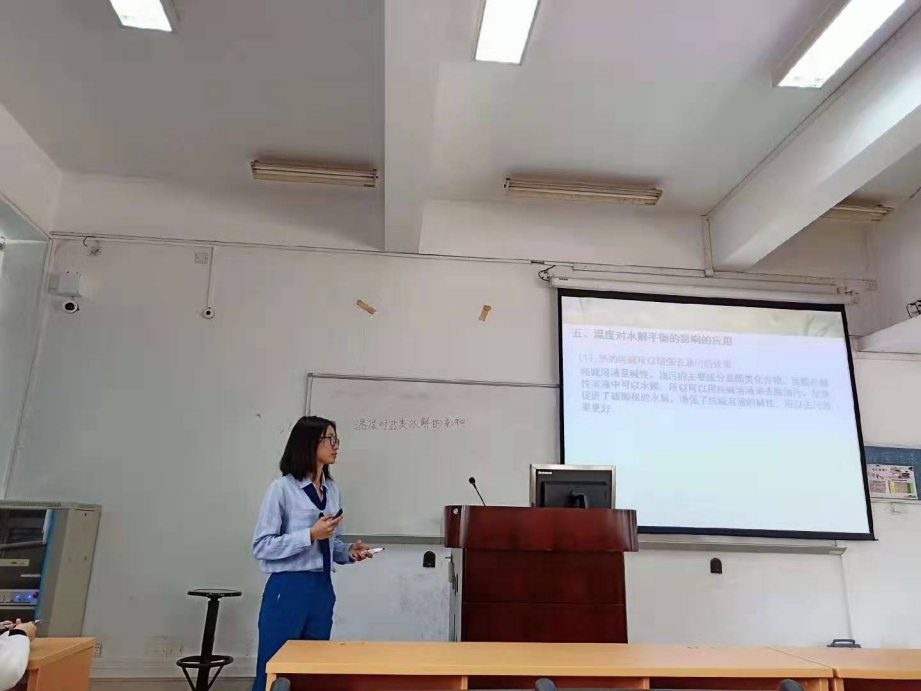
Likes
Editor's Note: Under the theme of “Challenge and Change”, the second English writing contest of SCNU has came to a close with over 280 articles from 28 schools and colleges. We recognize all prize winners for their excellent performance. Awarded winners have been announced (see results), and all winning articles will be published in this column.
-------
By Liang Zhengyu
On December 28, 2017, on the occasion of receiving all diplomatic envoys for the annual working conference in the Great Hall of the People in Beijing, General Secretary Xi Jinping pointed out that "looking at the world, we are facing major changes unseen in a century". Over the following three years, there have been astonishing changes such as the anti-globalization trend by the US, trade friction between China and the US, and Brexit. The sudden outbreak of COVID-19 in January 2020, and the subsequent pandemic, is the upcropping heralding a century of profound changes.
General Secretary Xi Jinping has made a strategic analysis and strategic judgment on the great changes in the world as have not been seen in a century. When did this century of great changes begin? To be specific, it started in 2010. In 2010, two landmark events took place. First, China's GDP became the second largest in the world, marking the overall rise of emerging market economies and developing countries, and the global economic landscape is undergoing qualitative changes.
Since then, the US has sharply adjusted its strategy towards China, from the rebalancing of the Asia-Pacific region to the formal classification of China as a strategic competitor in 2017.The fundamental driving force of the great changes lies in the breakthrough of the scientific and technological revolution and great institutional innovation. Worldwide commodity circulation, trade, prosperity, investment convenience, technological development, personnel mobility and information dissemination have been developing in depth, profoundly affecting the development model, communication model, thinking model and governance model of today's world. Faced with such an unprecedented opportunity, how should Chinese enterprises proceed?
Over the next decade, Chinese manufacturers and companies will face a huge wave of digital transformation. Digital innovation is an organizational process in which multiple innovation entities redevelop products and services based on the growing digital infrastructure, and generate new products or provide new services. Digital innovation requires the interconnectivity and combination of physical and digital products, production methods and organizational logic.
Through digital innovation, potential organizational or social needs can be continuously tapped. For example, the combination of Nike running shoes and Apple's products (mobile phones, watches, etc.) has led to new services such as smart health monitoring. Digital innovation rearranges the digital and physical components of existing products and services to produce new products or services through new combinations that are both embedded in and driven by new digital technologies.
Bringing virtual network environments and innovators together and supporting digital innovation of digital technology, physical products and services, and digital resources, such as the scenario provided support function above, enables the innovators to "embed" digital capabilities, and expand the function of physical products and services, creating products and services of greater significance, for example, the SMS implemented traditional paper high-speed rail ticket service vouchers function). Digital innovation is based on the technology of digital high flexibility embedding new functions in a product.
In fact, digital transformation is increasingly possible in this era. The main problem is that the markets that for companies have changed dramatically, and in geographical sense, and now are broader than ever before.
Due to the emergence of personalized and increasing market competition, the difference in the market demand is also becoming more and more common. Therefore, enterprises need more keenly to respond to the market, which creates a traditional mode control growing organization. It also can't satisfy the need timely response and the market demand will be increasingly diversified.
There is no doubt that digital transformation offers an opportunity: digital transformation can not only help large enterprises adapt to the changes brought about by organizational and market demands, but also provide more and more opportunities for small and medium-sized enterprises.
Because SMEs can use digital transformation to transform themselves into a plug-and-play resource and form a larger industrial ecology around the industrial chain integrators. In this process, digitization can better integrate these resources into a complete and efficient production system. This is also a great advantage for Chinese enterprises in the future market competition.
Chinese enterprises may not be the most powerful in a single sense, but if these enterprises are regarded as an overall ecosystem and form an overall industrial chain, then these enterprises will become the most powerful manufacturing enterprises in the world.
So China's future depends not only on a few leading companies, but also on whether the entire Chinese manufacturing industry can form an ecologically strong manufacturing system.
We need to take a longer view, say the next three to six months, to see how companies can improve their odds of survival. We also need to think about how Chinese manufacturing enterprises should find their own direction and positioning in the next three to five years or even longer in the face of such great changes and changes throughout China. There is no doubt that digital innovation offers them unlimited possibilities.
What to read next:










